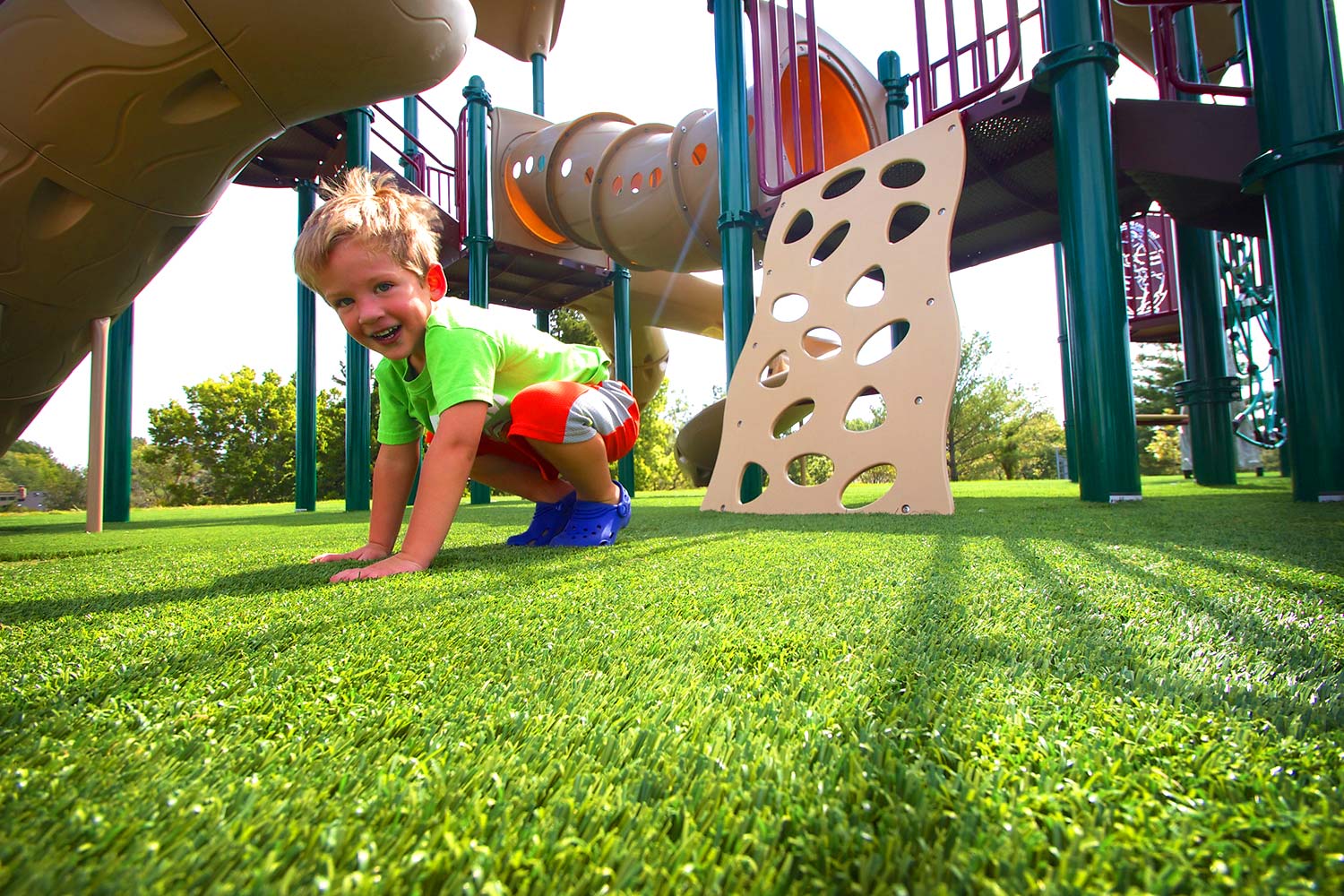After you buy artificial grass from an artificial grass supplier, dealer or importer follows these steps to lay artificial grass are –
Steps for Artificial Grass Installation
Step 1
If you’re installing artificial grass carpet over a soil, to make the space for a new base, dig the soil up to 3 to 4 inches from the top and remove the existing grass and plants.
To prevent slumping, allow rain soaked soil to dry before excavation. Compact the loose soil with the help of hand tamp or by walking over it. A small slope is recommended for better drainage.
Step 2
Install the grass turf over a well-draining soil such that the Synlawn artificial grass is permeable to the water and aggregate bases offer a good drainage layer. If there is no drain near the lawn, before you continue the installation, install a drainage system. If the area receives light rainfall, around the perimeter leave a small drainage gap after every 15 cm.
Step 3
To prevent the lawn from separating or slumping over time, install a waterproof border along the perimeter. You can use a plastic bender board or pour a concrete curb around the perimeter. The border shouldn’t protrude above grass level else it might inhibit drainage.
Step 4
To prevent the growth of weeds, at the bottom of the excavated area or over the base material, add a Geo textile barrier. This barrier discourages earthworms and gophers from digging through synthetic grass. If you have rodent problems, you can also install a layer of rodent wires.
Step 5
Fill the excavated material with a mixture of finely crushed rock, decomposed granite with particles size less than 10 mm and gravel; up to 3 to 4 inches for improved drainage and prevent slumping. If you are installing the artificial grass carpet over a hard surface or concrete you can use a rubber shock self-leveling compound.
Step 6
Smooth out the base material via a landscaping rake. To grade a flat surface to a 2-3% slope use string, ruler and bubble level.
Step 7
To lubricate the particles for compaction, sprinkle garden hose on gravel or sand. To compact the base to a depth 90% less than its original depth, compact the base with the help of roller compactor, plate compactor, or hand tamp.
Step 8
While the base dries, unroll the artificial grass carpet on the sides. After the base dries off and it’s smooth and firm, continue the process.
Step 9
With the help of a friend, stretch out each strip of artificial turf grass over the prepared base. The turf should be install in such a way that all the blades of the turf are in same direction else the grass will not give a natural look and feel.
Step 10
When required by the shape of the projected area, cut out the underside of the grass turf via a carpet cutter.
Step 11
You can use a carpet stretcher to stretch out the turf strips before you fasten them to secure the surface to the ground, lower the expansion due to heat and remove wrinkles.
Step 12
Place two strips close to each other and fold the edges back. Apply the lawn seaming material on the exposed base and cover it with an adhesive product. Fold the strip back on the seaming material and allow it to dry. You can also lay a seaming tape on the ground and keep the strip over it or fasten them together with a stake
Step 13
Fasten the trip around the perimeter with the help of landscaping anchor pin or galvanized stakes at the interval of 6 inch.
Step 14
When the lawn is completely dry, apply a thin layer of washed silica sand, black crumb rubber, or copper slag with the help of a drop spreader or sand.
Step 15
After every raking of infill material, bloom your turf via a boom or rake
Step 16
After the installation of artificial grass, water the lawn.
